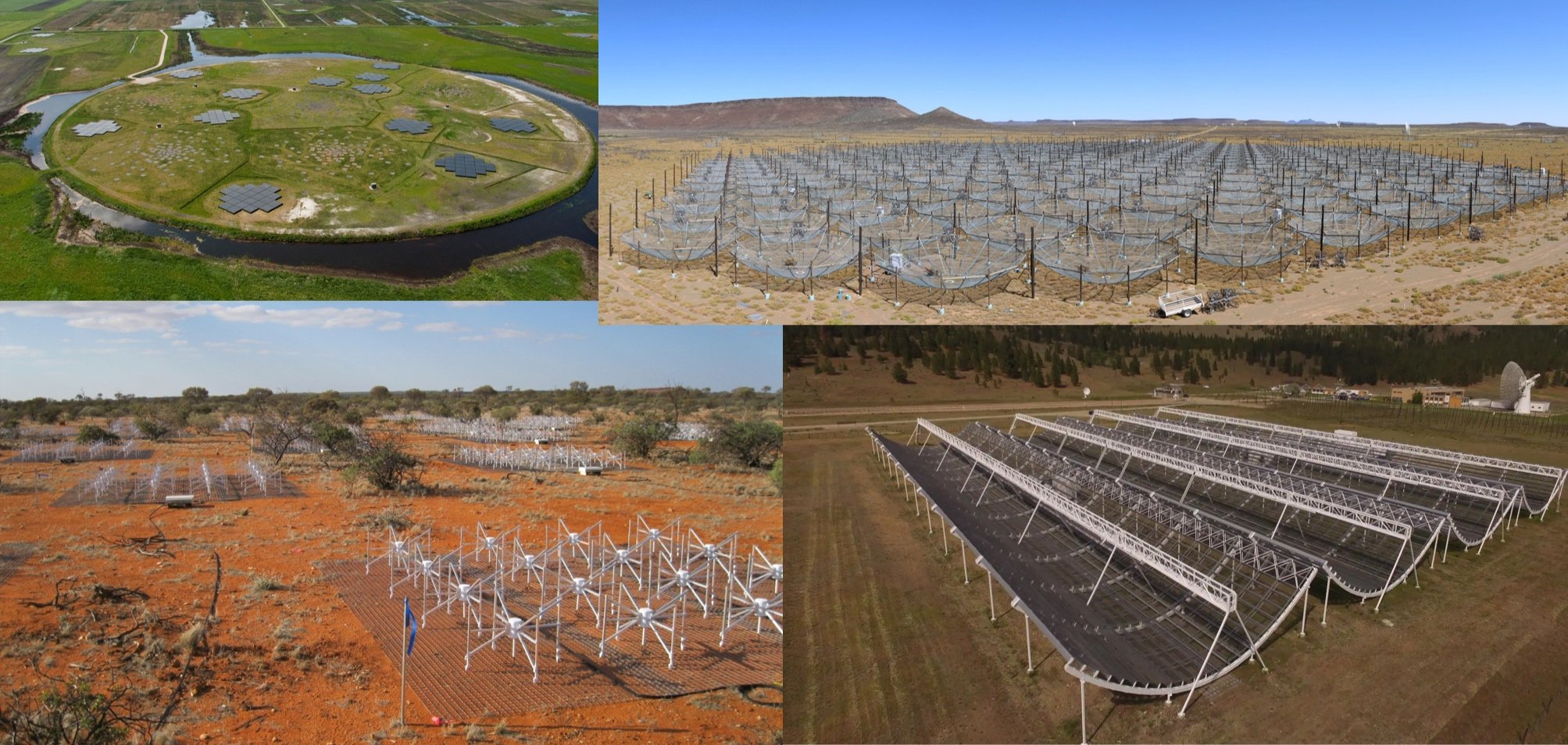
21 cm Cosmology
Working Group
Technical foundation for future 21 cm Cosmology Telescopes
Observing the redshifted 21 cm emission of neutral hydrogen has the potential to revolutionize our understanding of the evolution and growth of the Universe. This scientific promise is matched by the technical difficulty of the measurement. While the current generation of 21 cm Cosmology observatories has made steady progress, extracting the faint cosmological signal and realizing the full scientific potential requires exquisite instrumental precision. This steady but slow improvement in power spectrum upper limits sometimes hides the enormous technical progress that has been made in our understanding of how to perform the measurement.
As the community considers the next generation of 21 cm Cosmology telescopes, we find ourselves at crossroads. The first generation of observatories tried a wide range of technical approaches (smooth uv coverage/redundant arrays; single elements/grouped elements/dishes/cylinders; direct sampling/2nd Nyquist sampling/single stage channelization/multi-stage channelization; many varieties of calibration; etc.). This diversity helped quickly explore the real world pros and cons of a variety of technical innovations at modest cost. However, as we contemplate next generation observatories their increased expense will necessitate end-to-end systematic error budgets to provide funders confidence the science goals will be achieved.
Purpose of the 21 cm Cosmology Working Group
The purpose of the 21 cm Working Group is not to design a next generation telescope. The purpose of the working group is to identify areas of technical development that will enable next generation 21 cm Cosmology observatories to be designed with realistic performance expectations.
Towards this end technical leaders from around the world have been holding discussions to better understand the state of the field and to identify areas where we feel rapid technical progress can be made. Through the fall of 2023 and early 2024 we had extensive discussions that can be broadly grouped into six areas of interest.
Areas of interest
Antennas & layout—smooth beams in an array context. With great care we have learned how to make individual antennas with spectrally & spatially smooth beams (e.g. EDGES). However, when these antennas are brought near each other in the close-packed arrays needed for 21 cm Cosmology those beams change due to reflections and coupling between the antenna elements. At EoR frequencies (sky dominated) this is understood as mutual coupling, whereas at Dark Energy frequencies (receiver noise dominated) it is seen as LNA cross-talk. This is closely related to the arrangement of antennas, as regular arrangements may make the problem better (symmetries) or worse (standing waves) depending on the antenna design.
Feed to digital—spectrally smooth digitized input. A number of surprisingly subtle issues have been identified between the antenna and the analog-to-digital converter (A/D). These include cable-end reflections, cable micro-reflections, amplifier non-linearities, temperature dependence of electronics and cables, analog fiber modulation issues, and clock distribution. When extreme spectral precision (e.g. 1 part in 100,000) is required any transmission of the analog signal must be done with extreme care. Digitization at the feed has been proposed, but this transfers many of the issues to the clock distribution system and digital RFI shielding at the feed. The challenge is to preserve the attributes of the analog antenna array into the digital domain.
Digital to visibilities. As our precision has improved it has become apparent that our current digital channelizers and correlators are non-linear. This is primarily through internal re-quantizations within the digital chain (explicit and implicit), though dropped packets, non-random rounding, and over/underflows are all important contributors. The goal is to ensure the digital processing system can preserve the precision of the sampled electric field through to the measured visibilities.
Calibration. A wide range of techniques have been developed including bright-source and pulsar holography, drones, in-feed calibration sources, satellite observations, and a host of astrophysical source calibration techniques. It is now understood that redundant & sky based astrophysical calibration cannot achieve the necessary precision (catalog errors, etc.), and artificial calibration sources have encountered various limiting issues. Through our discussions calibration was identified as an area where we think near-term rapid progress can be made, and will be the focus of our first workshop.
Analysis. There is a wide diversity of analysis techniques, and this has been a strength of the community. However, various analyses place different constraints on the instrument and its calibration. For example, delay spectrum observations in the EoR window have much weaker constraints on the timing (phase, cable length) than an m-mode analysis of the BAO which must work within the wedge. Similarly, imaging and cross-correlation studies of the EoR will have yet another set of requirements. Questions of whether Bayesian approaches that marginalize over unknown instrument effects will ever be computationally viable.
RFI. The challenge of spectrally structured radio interference has become increasingly apparent. Particularly with the proliferation of digital radio communication and satellite constellations (both out-of-band emission and reflections), mitigating the effects of RFI so we can ensure reliable science will be a significant design concern of future 21 cm Cosmology arrays.